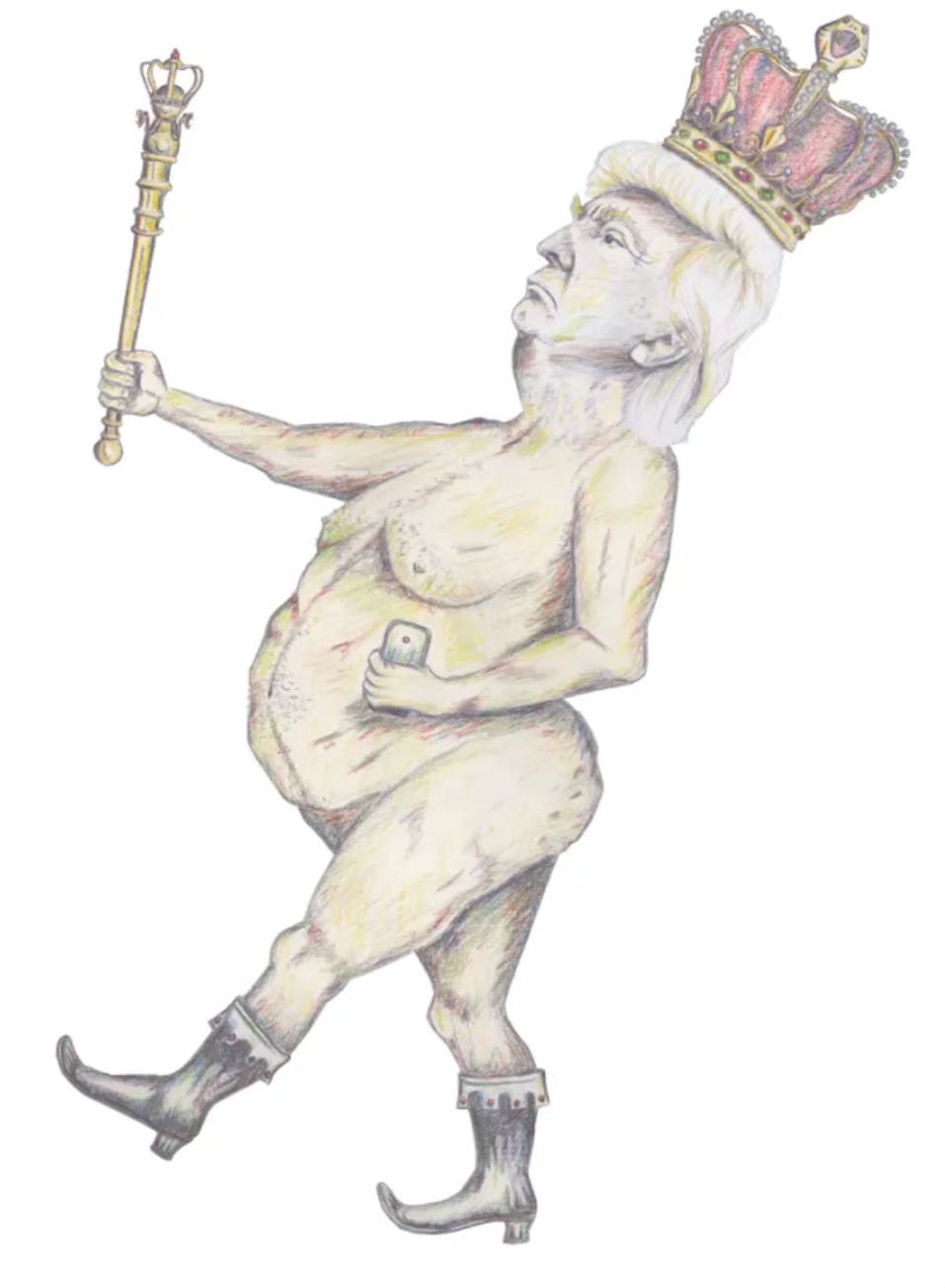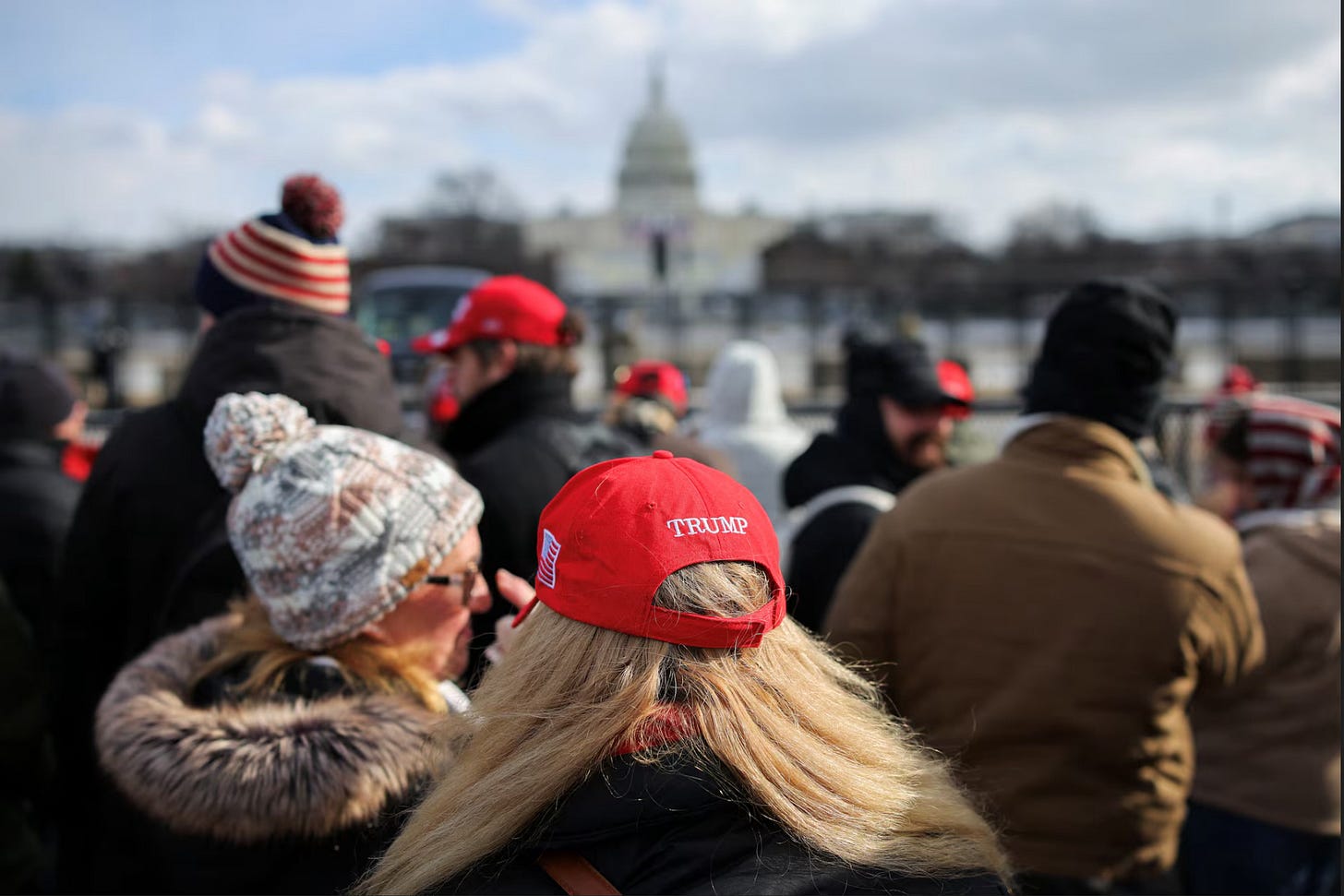On Monday, January 20, 2025, thousands of MAGA supporters braved the bitter cold in Washington, D.C., to witness Donald Trump’s second inauguration. Some travelled hundreds of miles, many at great personal expense, to see the man they believed would fight for them – someone who understood their struggles and spoke their language.
Bundled in red hats and winter clothing, they shivered in the freezing wind, hopeful for a glimpse of their president. But Trump was not among them. Deciding it was too cold, just three days before the inauguration, Trump requested that he retreat to the warmth of the United States Capitol Rotunda with his wealthy allies. From their heated vantage point, they performed the ceremony while their working-class supporters endured the elements outside
This contrast encapsulates Trump’s legacy, but it is also something far greater: an unveiling. Trump has inadvertently begun to tear the curtain away from the ruling classes, exposing the hypocrisy at the heart of power. He portrays himself as a populist, a man of the people, but his actions reveal the truth – his allegiance has always been to the wealthy elite.
What makes Trump’s presidency remarkable is not the lies he tells but the truths he reveals, albeit unintentionally. By being so overt, so brash, and so self-serving, he forces people to see the mechanisms of a system designed to benefit the few at the expense of the many. The same disillusionment that led people to Trump may now lead them away – to something better.
The Emperor Who Reveals the Illusion
Trump is the ultimate emperor with no clothes, but what makes him different is his willingness to flaunt it. His insatiable ego and craving for affirmation have made him careless, surrounding himself with sycophants who flatter him not out of loyalty but for their own gain. The absurdity of this arrangement reveals the hollowness of the system he represents.

Trump’s public performances – the rallies, the photo ops, the grandiose speeches – are designed to convince his supporters that he is fighting for them. But his decisions belie a different reality: tax cuts for billionaires, cozying up to corporate lobbyists, and surrounding himself with the ultra-wealthy while working-class Americans struggle. Trump doesn’t bother to hide whom he truly serves.
This is the paradox of Trump’s presidency. In his shamelessness, he strips away the illusions that elites have long used to maintain their power: the myths of meritocracy, civility, and inevitability. His actions force us to confront the uncomfortable truth that the system has always been rigged.
Disillusionment: The Path to Trump and Beyond
It was disillusionment that brought people to Trump. For decades, working-class Americans watched their jobs disappear, their wages stagnate, and their communities crumble, all while elites grew richer and more detached. Trump’s rise was a backlash against a system that had abandoned them, and his brash populism offered the promise of disruption.
But disillusionment cuts both ways. Trump’s presidency will show many of his supporters that their faith was misplaced. The man who promised to drain the swamp will only deepen it. The president who claims to fight for the forgotten will instead enrich his allies.
This same disillusionment can lead people away from Trump – if the left can offer a genuine alternative. The left must recognize that anger at the system is not misguided; it is righteous. Instead of meeting disillusionment with judgment or mockery, the left must channel it into hope and tangible change.
Historical Parallels: The New Deal and the Welfare State
History offers lessons on how responsible governments can enact transformative changes following times of crises. During the Great Depression, President Franklin D. Roosevelt implemented the New Deal, a series of programs and reforms aimed at providing relief, recovery, and reform to a nation in crisis. Roosevelt directly confronted the power of oligarchs, stating in his 1936 Madison Square Garden speech, “They are unanimous in their hate for me—and I welcome their hatred” (Roosevelt, 1936).
The New Deal reshaped the American economy with transformative programs like Social Security, unemployment insurance, and the Works Progress Administration, which provided millions of jobs. It proved that systemic change was not only possible but necessary in the face of widespread disillusionment.
Similarly, in post-war Britain, disillusionment with pre-war social conditions led to the establishment of the Welfare State under the Labour government. The Beveridge Report of 1942 identified “the five giants” of want, disease, ignorance, squalor, and idleness, laying the foundation for the National Health Service and social security systems designed to ensure a basic standard of living for all citizens.
These reforms were not just responses to crises – they were bold reimaginings of what society could be. They demonstrate that disillusionment, when met with vision and courage, can drive profound and lasting change.
The Potential for Great Change
Trump’s presidency may ultimately be remembered not for the damage it caused but for the truths it revealed. His blatant self-interest and overt allegiance to the elite have made the mechanisms of power impossible to ignore.
This is a moment of profound opportunity.
However, exposure alone is not enough. History warns us that when systems collapse, they can give rise to something worse – oligarchy, authoritarianism, or outright chaos. The rise of fascist regimes in 20th-century Europe serves as a stark reminder of what happens when disillusionment is exploited by demagogues instead of being channelled into progress.
The left must step into the void with a bold and hopeful vision. This vision must be clear and tangible: universal healthcare, fair taxation, stronger labour protections, and policies that prioritize people over profit. Most importantly, it must demonstrate that another world is possible – not just in rhetoric but in action.
Trump’s Unintentional Legacy
Trump’s greatest irony is that, in his quest to consolidate power, he may well have inadvertently begun to weaken the system he seeks to uphold. His overt greed and disdain for working people have laid bare the inequities of the ruling classes. The illusion is already beginning to crack under the strain of his presidency, and we're not even one week in yet.
But the cracks alone are not enough. The left must seize this moment to turn disillusionment into action, to show people that their anger is justified, and to lead them toward a system built on justice, equality, and dignity.
If we fail to act, the moment will pass, and the system’s defenders will find new ways to patch the cracks. But if we rise to the challenge, we can transform the disillusionment of today into the hope of tomorrow. Together, we can create a world where no one is left shivering in the cold while the powerful watch from above. The time to act is now.
References
Franklin D. Roosevelt. (1936). Address at Madison Square Garden, New York City. Retrieved from (speakola.com)
"New Deal." (n.d.). In Encyclopædia Britannica. Retrieved from (britannica.com)
"The rise of the modern welfare state." (n.d.). In Oxford Academic. Retrieved from (academic.oup.com)
"Inauguration moved indoors due to extreme cold, Trump requests change." (2025). In CNN. Retrieved from (cnn.com)




